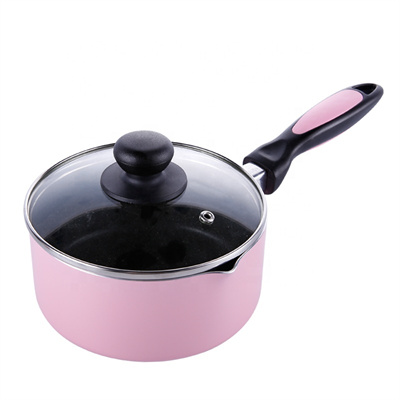Cooking isn’t just about combining ingredients; it’s a science of flavors. The sauce pan, an unassuming kitchen essential, plays a pivotal role in unlocking the chemistry of taste. In this article, we’ll delve into the chemistry of flavor development that takes place within a sauce pan and how it contributes to the deliciousness of your dishes.
Caramelization and Browning: When you sauté ingredients in a sauce pan, the heat triggers a chemical reaction known as the Maillard reaction. This process involves amino acids and sugars interacting under high heat to create a complex range of flavors and aromas. The result is the rich color and depth of flavor seen in seared meats and sautéed vegetables.
Emulsification: Sauce pans are essential for creating emulsified sauces like hollandaise and vinaigrettes. Emulsification involves blending two immiscible liquids—such as oil and water—into a stable mixture. The agitation and controlled heat provided by a sauce pan help the molecules of these liquids bond together, resulting in creamy and cohesive sauces.
Reduction and Concentration: The sauce pan’s wide surface area allows for efficient evaporation during the reduction process. As liquids simmer and steam rises, flavors become more concentrated. This intensification of flavors creates a complex and robust taste profile in dishes like reductions, gravies, and sauces.
Flavor Extraction: When simmering ingredients in a sauce pan, the liquid acts as a solvent, extracting flavors from herbs, spices, and aromatics. The heat causes molecules within these ingredients to release into the liquid, infusing it with a bouquet of flavors that define the essence of your dish.
Deglazing and Fond Development: After searing meats, fond—the browned bits stuck to the bottom of the pan—forms as a result of the Maillard reaction. Adding liquid to deglaze the pan not only lifts these flavorful bits but also incorporates them into the liquid, resulting in a sauce that’s a treasure trove of rich, savory taste.
Conduction and Even Cooking: The sauce pan’s ability to evenly distribute heat through conduction ensures that ingredients are cooked uniformly. This is crucial for achieving a balanced blend of flavors, allowing each element of your dish to reach its peak taste potential.
In conclusion, the sauce pan is more than just a vessel for cooking; it’s a laboratory of flavor chemistry. Understanding the chemical processes that unfold within its confines empowers you to create dishes that tantalize the taste buds with layers of complexity. By harnessing the chemistry of flavor development, you can transform ordinary ingredients into extraordinary culinary masterpieces.







